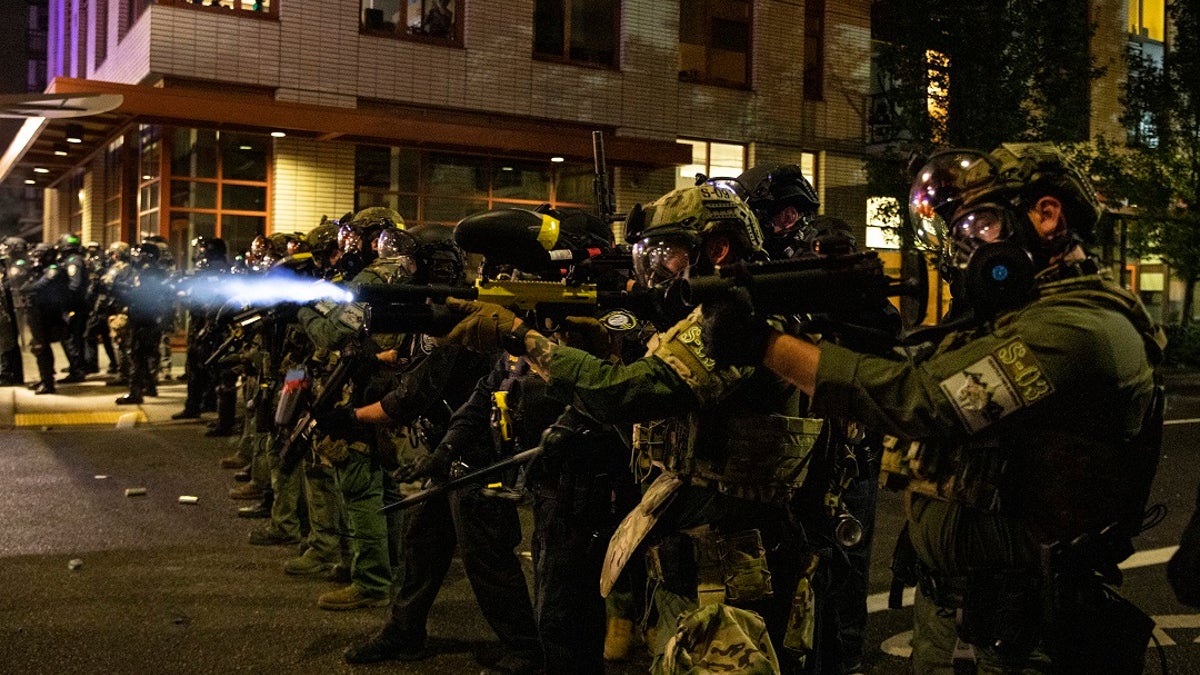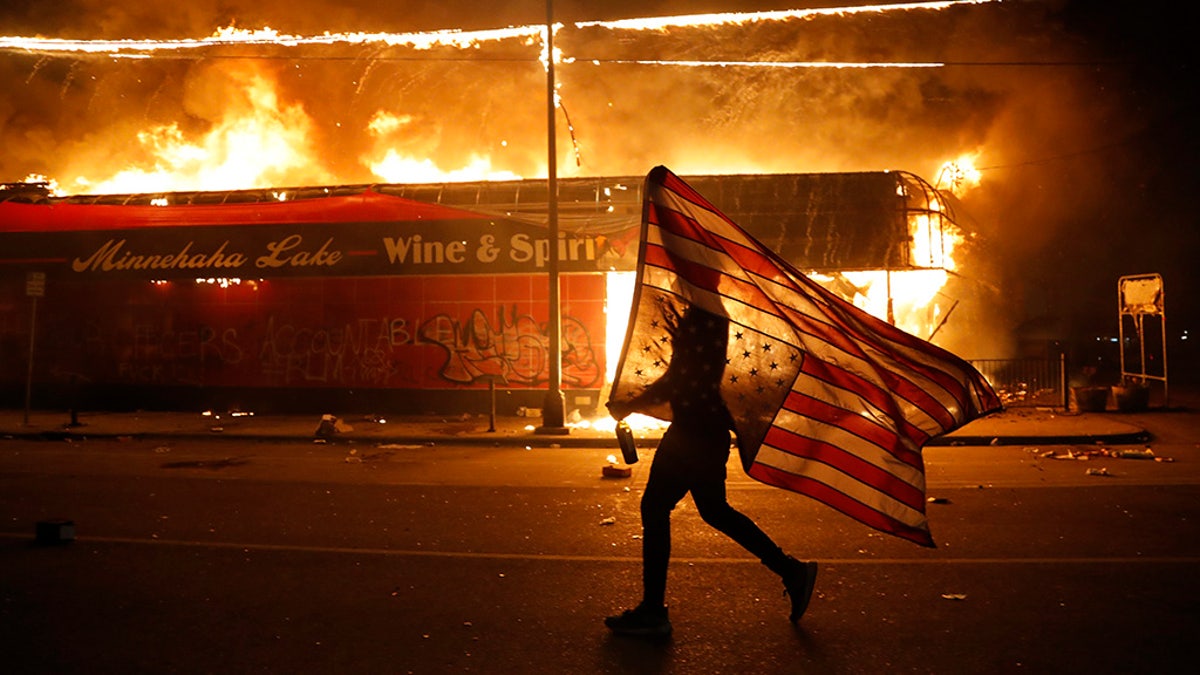Media top headlines October 20
In media news today, Jen Psaki gets slammed for offering no explanation for why Build Back Better will cost nothing, Katie Couric says she should have included Ruth Bader Ginsburg's full quote, and The Washington Post gets crushed for a piece calling on American consumers to lower expectations
Critics were both unsurprised and angered by the latest unchecked criminal activity reported in Portland, Ore., on Tuesday, with many calling it a "normal day" in a liberal-run city that has largely hamstrung its police.
"A crowd of 100 people wreaked havoc in downtown Portland, Oregon – smashing storefront windows, lighting dumpsters on fire and causing at least $500,000 in damage – but police officers didn't stop them," ABC News reported Tuesday.
"So a normal day in Portland," Fox News contributor Guy Benson tweeted.

A Portland police officer pushes back protesters, Saturday, Sept. 26, 2020, in Portland. The protests, which began over the killing of George Floyd, often result frequent clashes between protesters and law enforcement. (AP Photo/John Locher)
PORTLAND REELS FROM VIOLENT WEEKEND, 13 SHOOTINGS IN 28 HOURS
Last year's protests against police brutality were first spurred by the murder of George Floyd by a Minneapolis policeman, followed by other high-profile, police-involved deaths and incidents. During one interval last summer, Portland weathered over 90 consecutive days of unrest. Additionally, the number of homicides in Portland this year has surpassed its previous annual record of 66 in 1987.
The rise in crime comes after the city's implementation of House Bill 2928, which prohibits police from using tools like pepper spray and rubber bullets for crowd control. The measure does, however, grant an exception for when it appears scenes are escalating into riots and to prevent more violence. The bill has its critics, but Portland Police Sgt. Kevin Allen told the Associated Press that until they get more clarity on the specifics, his officers "have to follow the most restrictive interpretation of it."
The lawmakers' move was described as dangerous by critics, who observed the Portland police are limited in how they can crack down on crime.

Federal police try to take control of the streets during protests, Friday, Sept. 18, 2020, in Portland, Ore. Oregon Gov. Kate Brown declared a state of emergency Friday in anticipation of a rally planned in Portland over the weekend that could potentially turn violent. (AP Photo/Paula Bronstein)
PORTLAND CITY COUNCIL ACCEPTS REPORTS DESCRIBING TEAR GAS USED BY OFFICERS AS ‘CHEMICAL WEAPONS’
"Where were the social workers?" Stephen Miller quipped in response.
Left-wing media have been accused of adding fuel to the fire when it comes to coverage of the carnage across the country. Last year, when rioters ransacked Kenosha following the police-involved shooting of Jacob Blake, CNN claimed the scenes were "fiery but mostly peaceful." When Ali Veshi told viewers the protests in Minneapolis were not "generally speaking unruly," he was standing in front of a burning building live on TV. Several people called out the media's nagging misleading narrative.

A protester carries the carries a U.S. flag upside, a sign of distress, next to a burning building Thursday, May 28, 2020, in Minneapolis. Protests over the death of George Floyd, a black man who died in police custody Monday, broke out in Minneapolis for a third straight night. (AP Photo/Julio Cortez)
"Where's the CNN breakfast burrito guy?" Greg Pollowitz asked, in reference to CNN correspondent Josh Campbell, who tweeted last September how peaceful the city seemed as he sat outside eating his breakfast in downtown Portland, in another apparent attempt to downplay the violence.
"Good morning from wonderful Portland, where the city is not under siege and buildings are not burning to the ground," Campbell wrote at the time. "I also ate my breakfast burrito outside today and so far haven’t been attacked by shadowy gangs of Antifa commandos."
CLICK HERE TO GET THE FOX NEWS APP
Portland's decision to limit law enforcement was echoed by other liberal cities, such as Minneapolis, where police morale plummeted in the wake of riots. Records showed that Minneapolis officers had almost immediately stopped conducting traffic stops after the riots and approached fewer individuals considered suspicious because officers considered the tenuous risk/reward ratio of appearing to be too aggressive.
Murders have increased 16% across major U.S. cities so far in 2021 compared to 2020, according to the Council on Criminal Justice's (CCJ) pandemic crime report.


